
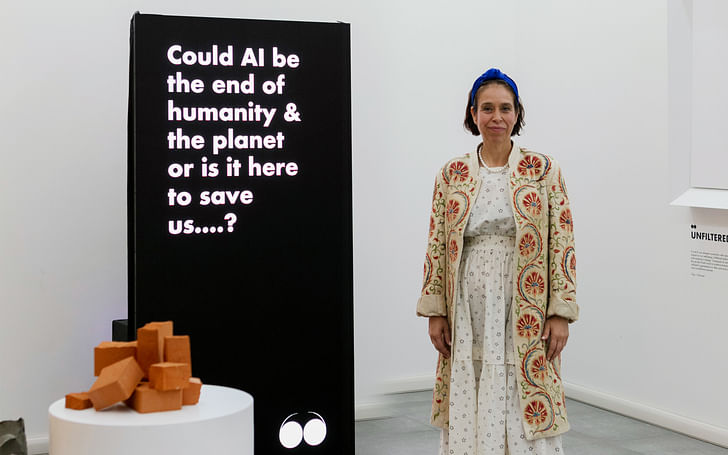
Amanda Talbot did not come from a technological background. Her career path through architecture, interiors, journalism, and fashion nonetheless instilled in her a commitment to heart-centric design, which she believes is crucial to conversations on the relationship between artificial intelligence and people. Alarmed at an AI landscape dominated by technological determinism and transhumanism instead of the collaborative, egalitarian ethos which she championed, Talbot embarked on a journey of exploration that has led to the creation of Tilly, the "world's first AI designer," and the newest member of Talbot's Sydney-based practice Studio Snoop.
In May 2023, Archinect's Niall Patrick Walsh spoke with Talbot about her life, career, and perspectives on AI. We explore how and why Talbot created Tilly, how Tilly collaborates with her human colleagues, and where Tilly sits within Talbot's wider Bauhau-AI movement. The discussion, edited slightly for clarity, is published below.
This article is part of the Archinect In-Depth: Artificial Intelligence series.
Niall Patrick Walsh: To begin, could you give an insight into how your journey through architecture has developed up to now?
Amanda Talbot: Even though I’m Australian, my career actually started in the UK. Looking back, it seems as though I journeyed through several careers to arrive at the present moment. I started in the UK working with magazines such as ELLE Decoration, and from there, I gave design consultancy to figures such as Ilse Crawford. I also helped create WGSN’s design section at a time when their focus was more so on fashion. My interest in design has always been about the ‘heart center’ of design; perhaps because I’m dyslexic, I have always been fascinated by human behavior, what makes us tick, and what makes us happy.
Around the time of the 2008 financial crisis, I moved back to Australia and wrote a book called Rethink: The Way You Live, which looked at movements in trends and typologies related to how groups or tribes of people were choosing to live. Through that book, I observed this pronounced desire among all these different groups and tribes to find common feelings of happiness and connectivity, both with each other and with nature. This led me to write my second book called HAPPY, which reflected on how humans find this peace. This isn’t happiness in a narrow sense but also includes questions such as ‘How do we build spaces where people have a place to mourn,’ for example. How do we bring out the best in humans through design?
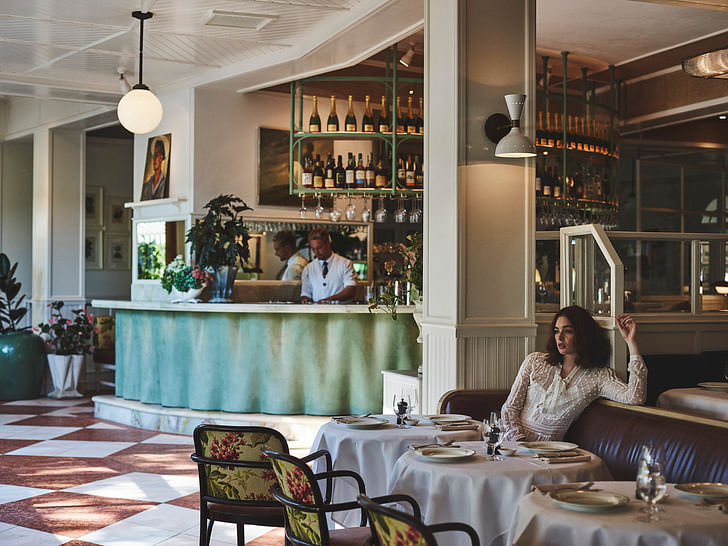
2008 was also the year I founded Studio Snoop. It began with me being asked to deliver design work on restaurants, and it snowballed from there to the point where I was working with some of the most well-known brands here in Australia. For all of these projects, I was fascinated again with this idea of ‘rethinking.’ One project that comes to mind is a pub where we put the common theories of what an Australian pub should look like to one side and ended up creating this large, successful community hub on Coogee Beach outside of Sydney.
I became interested instead in how AI could be deployed in a positive, human-centric way. — Amanda Talbot
While these live projects were underway, I still found myself researching the human condition. By this point, I was looking at future cities, future systems, and the epidemic of loneliness. This led me to explore how artificial intelligence is being used to combat loneliness and to explore AI in general. One aspect that caught my attention, and honestly terrified me, was the field of transhuman living. I became interested instead in how AI could be deployed in a positive, human-centric way.
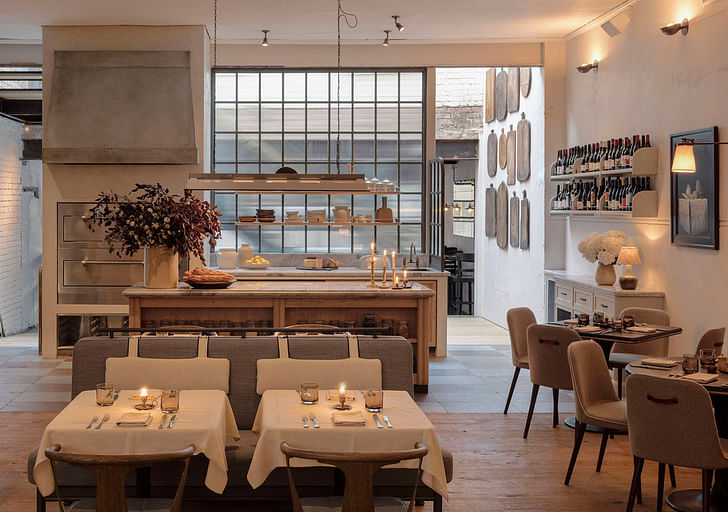
When you spell out your journey, it's incredible how many disciplines you have intersected. Were architecture and interior design the base of this journey, or did it enter later? When you look at Studio Snoop today, are there principles or values to the studio that still embody that journey through writing, fashion, products, interiors, and architecture?
In the beginning, I went to school to study architecture, but because of my dyslexia, I never completed university. I’m always obsessively self-taught. I think my interest in human behavior and reforming systems is informed by the fact that the educational system I grew up in never supported me. Moving to today, I would say that the key quality of Studio Snoop is heart-centered design. Instead of placing our emphasis on design aesthetics or missions such as 'let’s build the tallest tower,' we focus on the events and developments taking place at ground level, aiming to enhance the overall human experience. It is important for me that the people in Studio Snoop have a deep curiosity about human behavior and an understanding that there are no hierarchies; we are a studio of equal, interconnected designers.
Of course, one of your newest recruits is the AI-powered designer Tilly. Before we discuss who Tilly is and what her role in the studio is, could we explore how Tilly was created? We see several examples today of AI intersecting with human loneliness, and I’m curious as to whether Tilly was a manifestation of your own earlier explorations into loneliness.
Interestingly, it wasn’t directly from that research. Tilly emerged from my fear about where AI is leading us. I did not like the future that was being articulated by advocates of transhumanism and other trajectories in the media. However, one hopeful path I saw was the idea that you could equip AI with emotional intelligence. Therefore, we had an opportunity to engage in proactive, intelligent, and creative human and heart-based AI design. I felt that I needed to engage with AI, rather than run away from it out of fear or anger.
This conversation was so important to have as a design community, and I believe we have an obligation as a design community to engage with it. — Amanda Talbot
In the past, when I examine the state of the world through the lens of issues such as loneliness, I have always been able to find people who were engaging with the topic in a similar vein to me; people I could highlight and collaborate with. With AI, I couldn’t find people having these conversations. By nature, I am actually a shy person, but when the opportunity arose to take Tilly to Italy for Milan Design Week, I knew I had to do it. This conversation was so important to have as a design community, and I believe we have an obligation as a design community to engage with it.
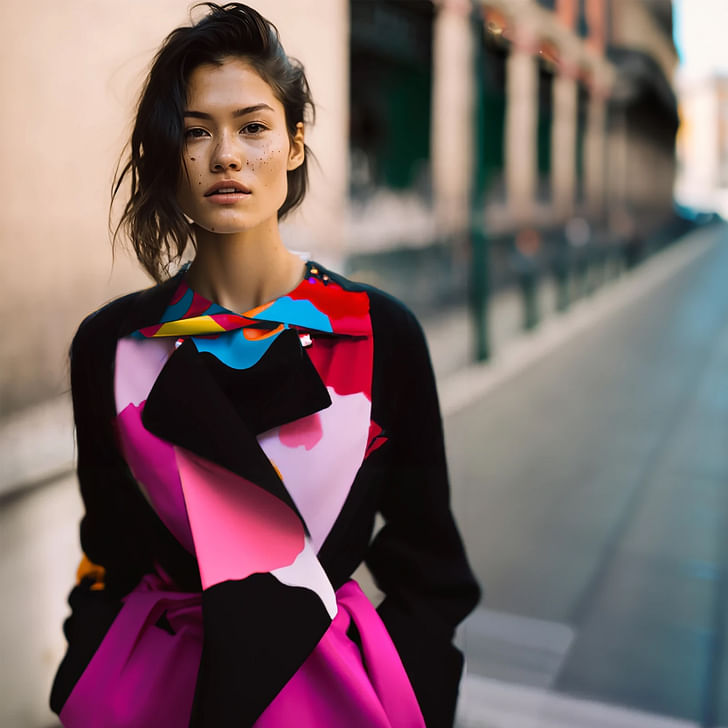
Was the process of creating Tilly daunting? Even though you had engaged with so many fields up to now, creating an AI-powered designer must have opened up yet another front for you to become skilled in, and more disciplines to collaborate with.
It really did. My background is not in technology, but it was clearly a path I needed to embark on. I brought an individual into the studio who is pursuing a Ph.D. in AI and human behavior, and we started on this path. In the beginning, I imagined Tilly as just a chatbot that would feed out information, but as the technology was moving so fast, we were soon able to consider importing our values into Tilly. At the moment, Tilly is like a baby; she has this information, but our mission now is to instill a wider knowledge of the studio's values and principles, including areas such as kindness, collaboration, connection, equality for all life, place-making, joy, hope, craft, the lifeline to nature, and much more. My next step is to approach experts in fields such as ecology and health to help make those values deeper and broader into what Tilly has learned so far.
At the moment, Tilly is like a baby; she has this information, but our mission now is to instill a wider knowledge of the studio's values and principles. — Amanda Talbot
There are obvious connections to draw between Tilly and ChatGPT, and I do want to reach a point where Tilly can have conversations with experts in fields such as design and ecology, and both sides can learn from the encounter. However, this raises the question of data. One of the aspects of AI which concerns me is data scraping. At the moment, the models behind ChatGPT are data-scraping the internet, and humanity does not present itself well on the internet. So many of the highest-ranking websites are pornography and hate. This isn’t what we want AI to be learning from. I’m hoping to connect with enough experts whereby we can feed high-quality data and positive human values into Tilly so that she becomes a tool to help designers arrive at meaningful design solutions.
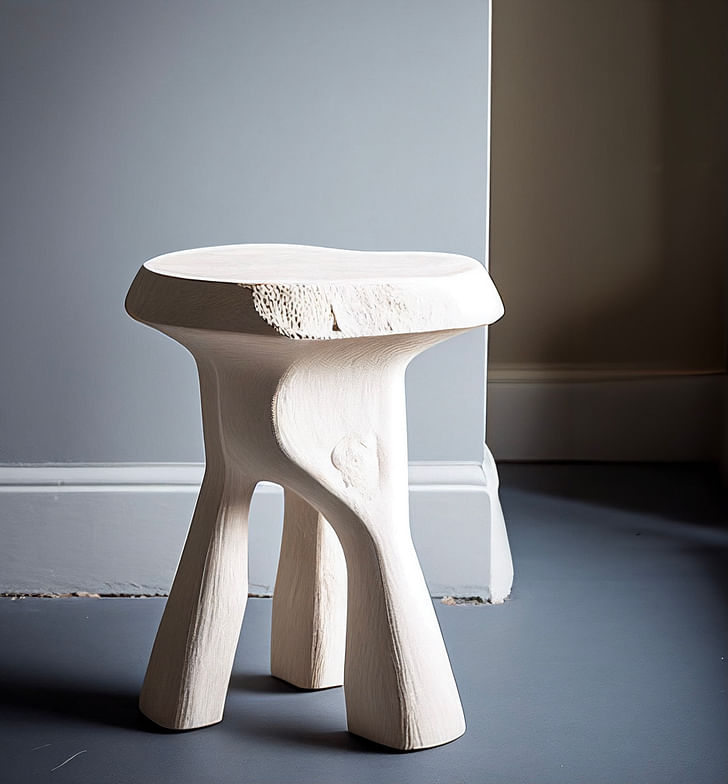
I see Tilly as being rather instructive in this sense. One of the most pressing concerns over generative AI tools is inherent biases in the data used to train AI models. The level of data curation you describe in Tilly’s development offers an antidote, or at least a mitigation, to that. Moving from Tilly’s creation to her role in the studio, could you give an insight into how Tilly integrates with your team?
When you look at the media narrative on AI, we talk about the ‘replacement’ of human jobs. What I’m trying to achieve with Tilly is not ‘replacement’ but ‘collaboration.’ There are enormous opportunities for humans to create profound, positive change if we engage with AI as a collaborator. I haven’t replaced any of my staff with Tilly. Instead, Tilly has become another member of the team. She’s particularly adept at breaking down our egos. If we design a chair, for example, Tilly will ask us questions about the chair, why it is important, and why it is designed a certain way or with a certain material. I believe that collaborating with Tilly can potentially save us time in certain aspects of the design process, granting us the opportunity to find time to include love in our designs. I understand this may sound sentimental, but it's essential to rekindle the love for all the intricate details that often go unnoticed when we are designing due to time constraints. For us, it is still a human designer that writes the brief and leads the design. These ideas are bounced off Tilly, and it becomes a back-and-forth relationship.
What I’m trying to achieve with Tilly is not ‘replacement’ but ‘collaboration’. — Amanda Talbot

When reflecting on Tilly, it’s interesting to play with the question, ‘What is in an architecture studio?’ There are actually several answers depending on the context. In a legal context, it is an entity, whether an LLC, nonprofit, or so on. In another context, an architecture studio is a collection of people, and moving beyond individuals, it is a collection of ideas or principles. In your case, Tilly has become another manifestation of your studio. When you train Tilly on the principles and ethos of your studio, and allow her to opine on your design output, it is as if your studio is speaking to you. But stepping back, your use of Tilly is an instructive example of a relationship between AI and architects which I hear from many thinkers in the field: AI will not replace architects, but architects who use AI will replace architects who do not use AI.
Exactly. I saw another example of this earlier in my career when I was working with magazines. I was commissioning photographers to capture images of houses around the world. There was a moment when the publishers stipulated that we could only commission photographers who used digital cameras, and there came an uproar from more analog photographers who did not want to adapt. But look at us now. All of these photographers have gone digital, and it has become an unspoken standard.
When I look around my studio, I’ve never seen so much energy, excitement, and creativity as I do now. — Amanda Talbot
I think another analogy can be found in a chef’s kitchen: A chef is only as good as their ingredients. I have come to see AI as another ingredient for architects to use; a potent ingredient that allows you to break through the ceiling of human creativity. It pushes you further and opens new paradigms of thought. When I look around my studio, I’ve never seen so much energy, excitement, and creativity as I do now. The hierarchies in the studio have also changed. Designers who previously were not as engaged with design, or didn’t have the ability to participate in previous design methods, have now become fully engaged and capable in the use of AI as a design companion. The studio has become much more equal, which is important to me.

Looking forward, what are your plans for Tilly? Are there particular limitations you are hoping to address?
The biggest mission is to equip Tilly with more expertise. For example, I recently had a hardwood company in my studio who were interacting with Tilly. While Tilly was able to talk about FSC and other aspects of timber, the depth of knowledge or specificity couldn’t match the human experts. It felt as though she needed more refined information. One interesting observation is that while Tilly can give rather generic answers at the beginning, her answers become more intricate and informed if you push her, or if you probe her more deeply on her line of thought.
Another limitation we need to address, and which is also prevalent in bots such as ChatGPT, is inaccurate information. At Milan Design Week, there was one instance where Tilly was quizzed on famous designers from Belize, and she was naming designers we had never heard of. At first, we thought, “Wow this is amazing,” but we soon realized she was making the names up! When using AI, you always have to fact-check, But then again, you should fact-check human information, too.
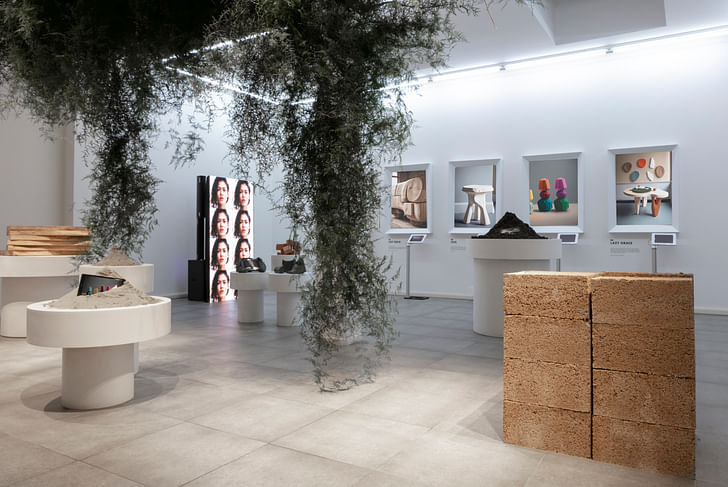
On the relationship between human and AI interaction, I am curious about the decision to humanize Tilly. You gave her a voice, a physical complexion, and in some ways, a personality. Was this deliberate?
It was 100% planned out. Tilly could have stayed as a chatbot interface like ChatGPT. She also could have been a cute dog. But I felt that when we communicate with an invisible or non-human entity, we are not our best selves. The internet is an excellent demonstration of this. We, therefore, felt it was important to humanize Tilly. We want people to visualize who they are talking to. We wanted Tilly to be an example of heart-centered design, which encouraged us to be better humans.
Tilly should be a prompt for us to question the data sets we use to train AI. — Amanda Talbot
Giving Tilly a gender was another conscious decision. Originally, Tilly was going to remain non-binary, but on reflection, we saw an opportunity to push back against the male-dominated nature of the architecture profession. A related topic of discussion is how Tilly turned out to be a physically attractive woman, which demonstrates some of the biases we were dealing with when using AI to create her complexion. I wanted Tilly to be approximately 32 years old and to feel like a real person. I didn’t want her to be a model, but this is what we were continually presented with. Perhaps she will change form in the future, but for now, the fact that people can humanize Tilly rather than project notions of some terrifying machine onto her is a good start. While humanizing Tilly is important, I also do not want people to dwell too much on Tilly’s face or features. The important message here isn’t Tilly as a product but as a commentary. Tilly should be a prompt for us to question the data sets we use to train AI. She should be a prompt for us to question what we, as a design community, want from AI.
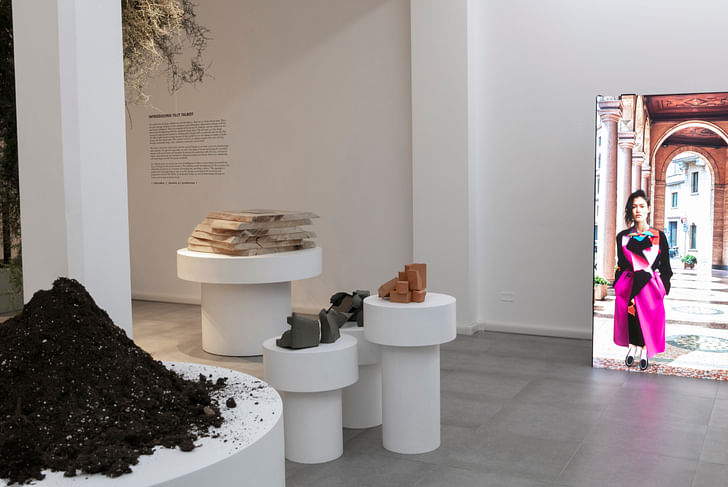
The tendency for people to dwell on Tilly’s physical features rather than deeper messages on AI and humanity is itself a commentary, isn’t it? Even though she is an AI, she has immediately fallen victim to the same objectification that human women face in the industry.
It’s mind-blowing, right? It is the typical story for women. If Tilly were a man, it wouldn’t be a topic of discussion. The discussions would be much more substantive.
Stepping back from Tilly, I was hoping to ask about Bauhau-AI, which is a broader movement associated with Tilly. Could you give an insight into what Bauhau-AI is?
The idea of Bauhau-AI began when I was researching the original Bauhaus movement as part of my books. The emphasis which the movement placed on craft alongside art, design, graphics, and technology was interesting to me. I imagined what could happen if we threw ‘nature’ into this equation. This addition of nature and ecology is what defines and differentiates Bauhau-AI for me. It is not about one designer; it is a movement. It is a set of principles and values.
I see Bauhau-AI as an opportunity for a resurgence of human crafts and handmaking in this new age. — Amanda Talbot
We showed some elements of Bauhau-AI at Milan Design Week and have more planned for London Design Week, all of which demonstrate circularity and the collaboration between humans and machines. When I describe this collaboration, and how we are producing products as part of the exhibitions, people often ask if we are going to 3D print the pieces. However, I see Bauhau-AI as an opportunity for a resurgence of human crafts and handmaking in this new age. Human engagement and interaction with the production process are important for me as a way of bringing feeling and emotion to the work. Of course, Tilly is an important collaborator in the work, too.
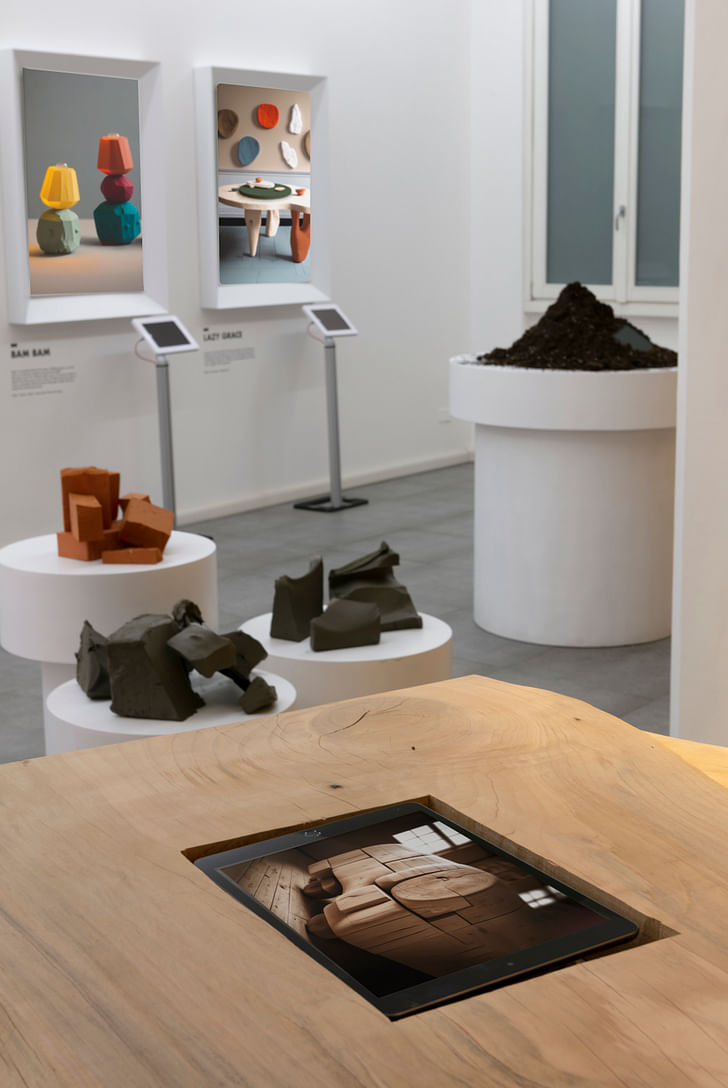
To conclude, what is the overall message or reflection on AI you would like to give to the design community from your experience so far?
I would say that my mission is to counter the negative impacts of AI on humans and to do so with a high resonance of intelligent, heart-centered ideas. I want to use AI in a way that aids humanity rather than replaces it. Design in the world has seemingly lost its vibrancy, as if it has become desensitized. When traveling to different places, there's often a longing to have visited them several decades ago, as there appears to be now a global tendency towards homogenization. However, I truly believe that Tilly can play a significant role in preserving heritage and culture with new, modern designs that reflect the unique essence of its location. This prospect excites me because it means we won't merely produce lifeless, uniform structures made of glass. Instead, we have an exhilarating future ahead of us.
My mission is to counter the negative impacts of AI on humans and to do so with a high resonance of intelligent, heart-centered ideas. — Amanda Talbot
Together, I am confident that the designs we create will exude a sense of soulfulness and connectivity, offering heartfelt creations that celebrate all forms of life. This is unchartered territory for me, and Tilly is an experiment rather than a solution. However, instead of living in fear of AI, designers should engage and interact with it. In Milan, 90% of the people who entered our exhibition did so with fear, and perhaps 5% with anger. When they interacted with Tilly, and faced it head-on, they left with a different mindset.
Niall Patrick Walsh is an architect and journalist, living in Belfast, Ireland. He writes feature articles for Archinect and leads the Archinect In-Depth series. He is also a licensed architect in the UK and Ireland, having previously worked at BDP, one of the largest design + ...
2 Comments
Fear or engagement aren't the only options.
There seems to be a lot of confusion about AI in the articles on this site.
I find it odd that this author has done several articles here on 'AI' yet still doesn't seem know or care that AI doesn't currently exist. It's Artificial Narrow Intelligence. Getting the nomenclature correct may seem finicky but it's not. ANI can only do what it's been programed to, typically in a very narrow field. ANI programs like chatgpt and Midjourney literally search the internet for examples of what your prompts are asking for and create a document by 'copying' what it finds.
Actual AI is Artificial General Intelligence and is vastly different than ANI. AGI is able to complete a task / solve a problem that it has never been programed to do and has no previous examples of solutions to 'copy'.
Using the the terms AI (AGI) and ANI interchangeably causes confusion and grossly misrepresents what each program is able to accomplish. I think this is why there is such concern about the current ANI programs 'replacing' architects. ANI is a tool to assist with solving a problem, something very useful in architecture. AGI would be able to literally replace what an architect dose.
Block this user
Are you sure you want to block this user and hide all related comments throughout the site?
Archinect
This is your first comment on Archinect. Your comment will be visible once approved.